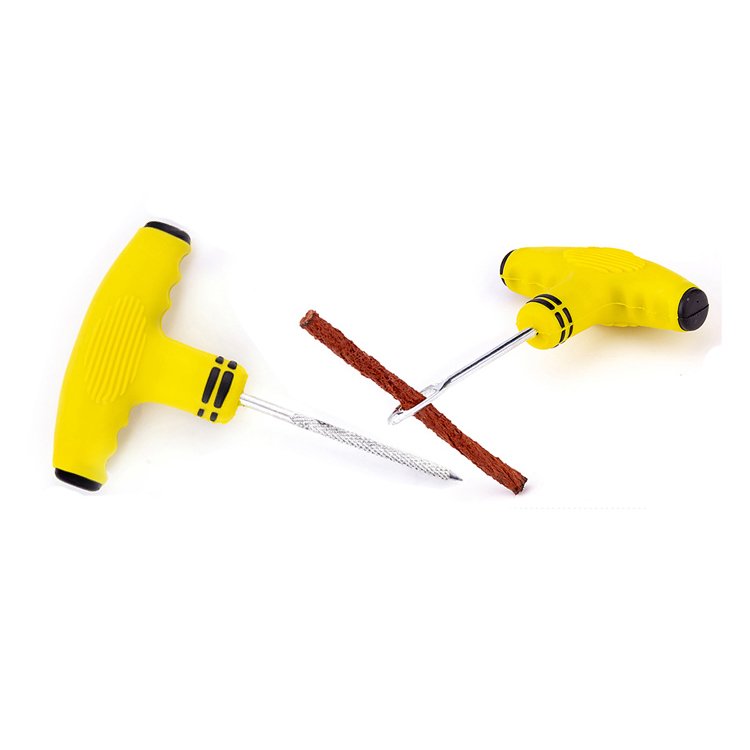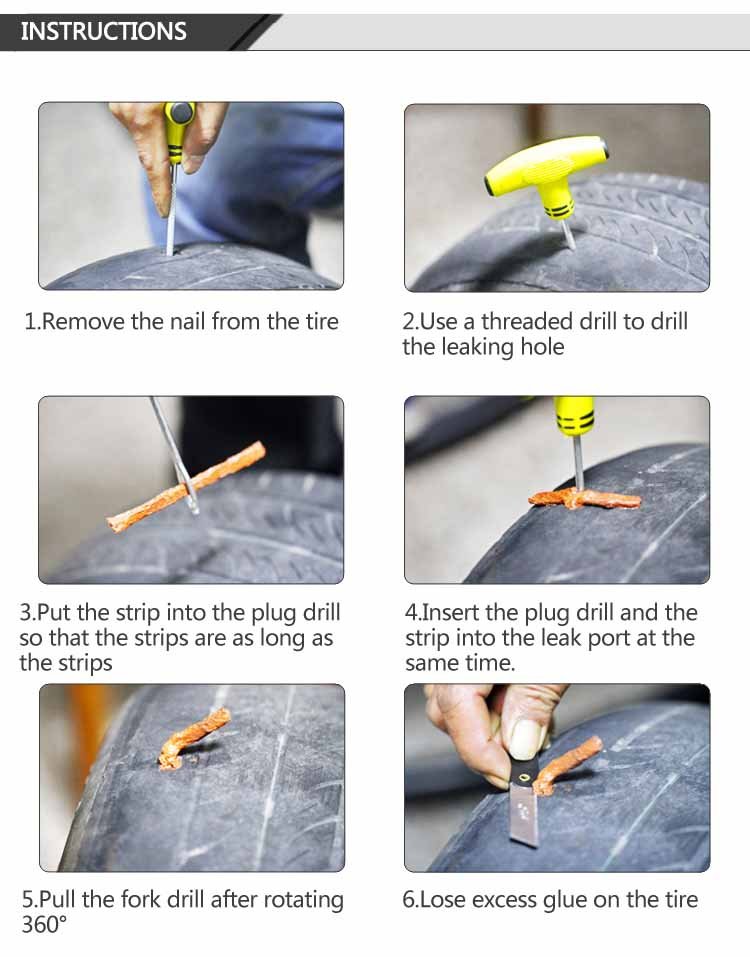How to properly repair tools
Repairing a tire properly requires it be demounted from the rim so it can be inspected on the outside and inside, remove damaged material, fill the void with rubber and seal the inner liner with a repair unit. If there are punctures or damage in the shoulder or sidewall of the tire, it is not repairable.
Car tire repair tool
In fact, tire seal string by itself or tire patch by itself is not an acceptable tire repair because plug does not seal the inner liner permanently and the patch does not fill the void created by the piercing object. Emergency tire sealant aerosols are not recommended as long-term solutions to a flat tire for the same reasons.
Once the tire is off the wheel, here are the general steps involved in applying repair material:
- Using tire repair tool, inspect the wound and the direction of the injury angle. Remove any loose foreign material.
- Prepare the surface by cleaning the area around the puncture thoroughly with an appropriate inner liner cleaner.
- Use the tire repair tool to ream the puncture channel several times starting from the inside of the tire. Then repeat this from the outside. Use a probe to double-check any splits in the radial plies surrounding the injury and remove any additional damage found.
- Select the correct size and type of repair patch based on the repair materials manufacturers recommendations. Center the patch over the wound and using a tire crayon, outline an area a half-inch larger than the material.
- To prevent contamination and preserve the outline, buff within the marked area thoroughly and evenly with a low speed buffer with a fine wire brush or gritted rasp. Take care not to expose or damage tire casing body (ply) cords. Buff to a velvety surface.
- Remove all rubber dust from the buffed area by using a fine wire brush and vacuum, being careful to avoid touching and contaminating the area.
- Remove the protective layer and inspect the repair.
It’s important to be aware that tires that contain puncture sealant(s) may have been damaged as a result of being run under inflated and/or overloaded. Be sure to inspect these accordingly before repairing tire.


